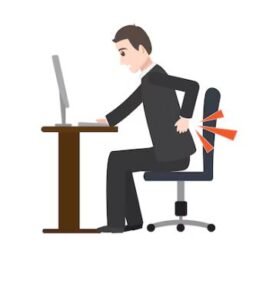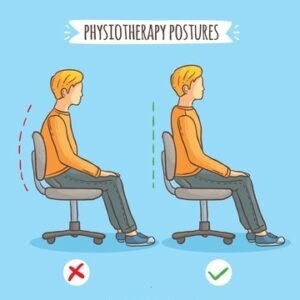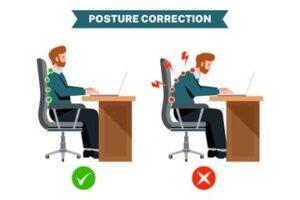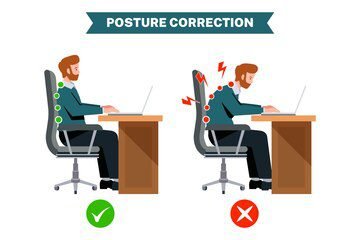Back pain from sitting is a common issue in today’s sedentary lifestyle. Whether you’re working at a desk, driving for long hours, or binge-watching your favorite series, prolonged sitting can strain your back and lead to discomfort. The question is, how to relieve back pain from sitting: soothe your discomfort or struggle with recurring pain? In this article, we’ll explore effective methods for relieving back pain caused by sitting, while also highlighting the risks of neglecting the issue, which could lead to long-term pain and discomfort.

Understanding Back Pain from Sitting
Before diving into solutions, it’s important to understand why sitting for long periods can cause back pain. Sitting for extended periods puts pressure on the spine, especially the lower back. This pressure can lead to muscle tightness, poor posture, and misalignment of the spine. When sitting, the muscles in the lower back and hips can become stiff, while the spinal discs experience compression. Without regular movement or proper support, this can lead to chronic back pain.
How to relieve back pain from sitting largely depends on addressing these issues—whether it’s adjusting your posture, increasing mobility, or incorporating specific exercises into your routine.
1. Improve Your Posture
One of the simplest and most effective ways to relieve back pain from sitting is to focus on improving your posture. Slouching or hunching over can put unnecessary pressure on the spine and contribute to discomfort. To alleviate this:
- Sit Upright: Ensure your back is straight and your shoulders are relaxed. Avoid slouching by aligning your head with your spine.
- Feet Flat on the Ground: Keep your feet flat on the floor with your knees at a 90-degree angle. Avoid crossing your legs, which can strain your hips and lower back.
- Support Your Lower Back: Consider using a small cushion or lumbar roll to support the natural curve of your lower back while sitting.
By making these simple adjustments, you can significantly reduce the strain on your back, offering relief and preventing the progression of pain. How to relieve back pain from sitting often starts with better sitting habits, which can reduce discomfort and prevent future issues.
2. Take Regular Breaks and Move Around
Sitting for long periods without moving is one of the primary causes of back pain. The muscles in your back and hips can become stiff and tight when you remain seated for extended periods. To prevent this, take regular breaks and move around:
- Stand Up Every 30-60 Minutes: Set a timer to remind yourself to stand up, stretch, and walk around for a few minutes. Even small movements can help relieve back pain from sitting.
- Stretch Regularly: Incorporate gentle stretches for your back, legs, and hips to improve flexibility and reduce tension. Stretches like the cat-cow, seated spinal twist, and hamstring stretches can help alleviate stiffness.
- Walk or Do Light Exercise: A quick walk or simple exercises like walking lunges can stimulate circulation and keep your muscles from stiffening up.
By taking these proactive steps to move throughout the day, you can relieve back pain from sitting and prevent it from becoming a recurring issue. Without regular movement, your muscles and joints will remain under stress, leading to persistent discomfort and possible injury.
3. Strengthen Your Core Muscles
A weak core can contribute to back pain by placing added strain on the spine. Strengthening your core muscles, including your abdominals, obliques, and lower back muscles, can help provide better support for your spine and reduce the risk of pain. Exercises such as:
- Planks
- Bridges
- Bird Dogs
- Superman Holds
These exercises can strengthen the muscles that support your lower back, reducing the pressure on your spine and preventing discomfort. Consistent core strengthening can play a key role in how to relieve back pain from sitting, as it stabilizes the muscles responsible for maintaining proper posture and reducing strain.

4. Use an Ergonomic Chair or Standing Desk
If you spend long hours sitting, investing in an ergonomic chair can make a significant difference. An ergonomic chair is designed to support the natural curvature of your spine and reduce the pressure on your back. Key features to look for in an ergonomic chair include:
- Lumbar Support: Proper lumbar support helps maintain the natural curve of your lower back.
- Adjustable Seat Height: Your feet should rest flat on the floor with your knees at a 90-degree angle.
- Adjustable Armrests: These should be positioned so that your shoulders are relaxed, preventing tension in the neck and upper back.
Alternatively, consider using a standing desk or a desk converter that allows you to alternate between sitting and standing throughout the day. Standing encourages proper posture and can help reduce the pressure on your back caused by prolonged sitting. The flexibility to change setting positions regularly can alleviate discomfort and keep your muscles engaged.
5. Apply Heat or Cold Therapy
For immediate relief from back pain caused by sitting, using heat or cold therapy can help reduce inflammation and ease muscle tension. Heat therapy, such as using a heating pad, can relax tight muscles and improve blood flow to the affected area. Cold therapy, such as an ice pack, can reduce inflammation and numb the pain.
Apply heat or cold for 15-20 minutes at a time, and avoid direct contact with the skin to prevent burns or frostbite. This can provide temporary relief from back pain, allowing you to continue your daily activities with less discomfort.
6. Consider Professional Treatment
If back pain persists despite self-care measures, it may be time to seek professional treatment. A physical therapist can guide you through specific exercises designed to strengthen your back and improve flexibility. Chiropractors can also help with spinal alignment, which may reduce pain from sitting.
Massage therapy can provide relief from tight muscles and increase circulation, promoting relaxation and healing. If necessary, consult with a healthcare provider to rule out any underlying conditions that could be contributing to your back pain.

Conclusion: How to Relieve Back Pain from Sitting: Soothe Your Discomfort or Struggle with Recurring Pain?
The question, of how to relieve back pain from sitting: soothe your discomfort, or struggle with recurring pain, ultimately comes down to taking proactive steps to care for your back. By improving your posture, taking regular breaks, strengthening your core muscles, and using ergonomic furniture, you can significantly reduce back pain from sitting. Incorporating these habits into your daily routine will not only help relieve discomfort but also prevent future pain.
However, neglecting these strategies may lead to chronic back pain that becomes harder to manage over time. The key is to listen to your body, take breaks, and implement a few simple changes to your routine. If needed, seek professional help to ensure you’re on the right track to relieve back pain from sitting and avoid recurring issues in the future.




